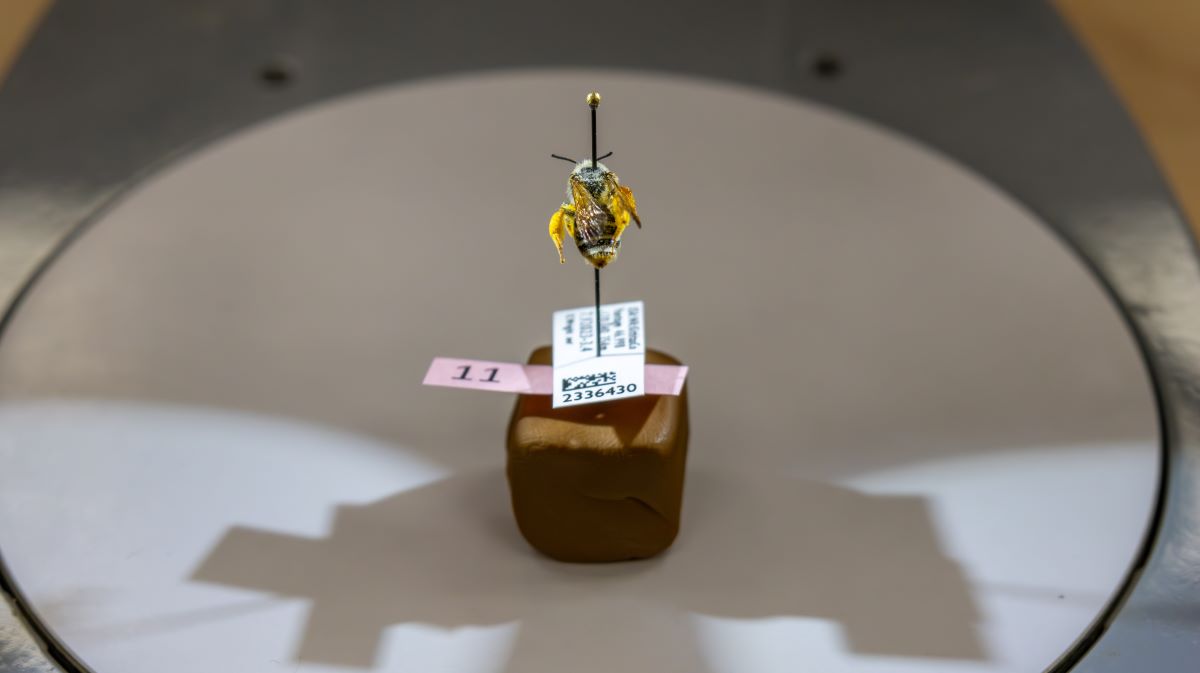"We need a bee, on a pin, under a microscope"
.jpg?width=399&height=224) As Don Rolfs, a naturalist and bee enthusiast who studied bees in Washington for many years, said, "We need a bee, on a pin, under a microscope."
As Don Rolfs, a naturalist and bee enthusiast who studied bees in Washington for many years, said, "We need a bee, on a pin, under a microscope." If we don't lethally collect bees, we'll never be able to know what bees we have here in Washington. If we don't know what we have, we'll never know which ones are doing well and which need conservation. We'll never be able to answer the question as to what bees we have in Washington or how they are doing. We won't know how changes impact native bees because we won't know what their current "normal" status is.
But why can't we learn about bees without killing them?
The reality is that almost no bees can be identified to species without a microscope (the primary exceptions being honey bees and some bumble bees). Here are a few things that make identifying bees challenging:
- Bees can be tiny. Some are mere milimeters long.
- Bees from totally different families can look superficially very similar to one another.
- The charachteristics used to identify bees are even smaller - such as the shape and number of "teeth" on the mandibles.
- Some bees must even be dissected to identify them to species - especially male bees.
Honoring the bees
Although we can't identify bees without killing them, that it doesn't mean we take killing bees lightly. We want to learn as much as possible about the bees that are collected. Volunteers are trained to preserve and pin bees so they are museum quality and preserved for generations to come. Every bee is professionally identified to species, sometimes by more than one entomologist for more challenging species.
Future projects also include conducting pollen analysis to learn even more about the flowers that the bees have been visiting, in addition to the volunteer-recorded host plants that the bees are collected on. Another goal is to create ecoregion specific seed mixes and plant list to further encourage the use of plants that support Washington's native bees in our diverse regions.
All of the data collected and information learned will be publicly available. While killing bees is a necessary part of this work, we take this seriously and are working to learn as much as possible from the bees collected as part of the Washington Bee Atlas.
